The Nintendo logo symbolizes exciting adventures, fast racing, and new experiences. It promises to play with a variety of games and cool gadgets. For video game and console fans, the Nintendo logo is an iconic symbol that has helped the company stand out from its competition over the years. The logo has changed at least a dozen times, with minor tweaks like a new color scheme. It has always been a wordmark, except for the 1960s. This article explores the history and evolution of Nintendo logo design, offering insights for designers and businesses on creativity and branding.
Brand Overview
Founded: September 23, 1889, Kyoto, Kyoto, Japan
Founder: Fusajiro Yamauchi
Headquarters: Kyoto, Kyoto, Japan
President: Shuntaro Furukawa
Number of employees: 7,317 (2023)
Website nintendo.com
Download the free logo PNG & SVG
History of Nintendo
Did you know that Nintendo has been around for over 130 years? Over the years, the company has created several unique designs for its visual identity. Nintendo’s logo design has gone through several iterations. If you’re interested in learning more about Nintendo’s branding history or how gaming companies worldwide choose their logos, you’re in the right place.
Throughout Nintendo’s history, the company has made several new designs, and almost all versions made were based on the logotype, whether Japanese or English. Only two seeds were different. Nintendo began in 1889, and the company’s goal was to create various games for children and their parents, from playing cards to toys and video games. Nintendo’s design reflects simplicity and fun, which is evident in its products.
Nintendo logo evolution
Over the years, Nintendo has evolved as a brand and introduced various products and solutions to its customers. As a result, the company has made several changes to its logo to reflect its growth and transformation.
In 1889
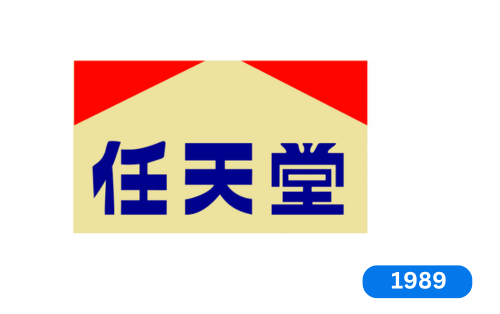
Did you know that the first Nintendo logo appeared on playing cards? The logo, used from 1889 to 1950, featured the company name in blue Japanese hieroglyphs on a gray background with a red triangle above it. Although Nintendo is now known for its great games, it started producing popular playing cards, which is why its logo reflects this. The logo had a light cream background with two red triangles in the upper corners and the brand name in blue.
1950
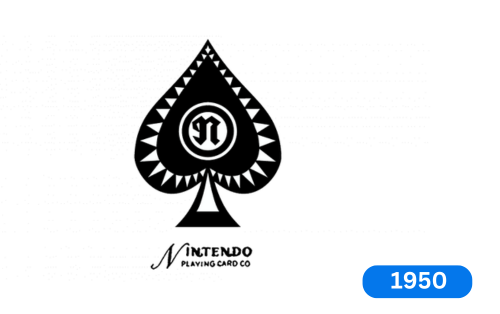
In 1950, the brand was redesigned, bringing a new monochrome badge. Despite the change, the brand remained focused on the card game scene. The new logo features a black figure with a small spade inside, written in English and surrounded by white spikes. It was placed above a handwritten wordmark. The emblem was enclosed in a white circle with a small ‘n’ inside.
1960
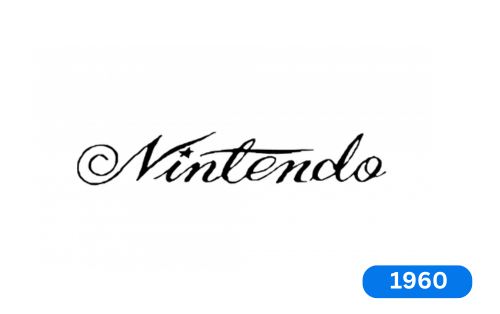
Nintendo changed its logo a few years after introducing the Spades logo. The new design was simple and featured only the company name in a fancy, cursive style. Even the dot above the “I” was made to look like a star. The new logo focused more on the company name and looked like a signature. However, there was nothing special about the logo.
1964
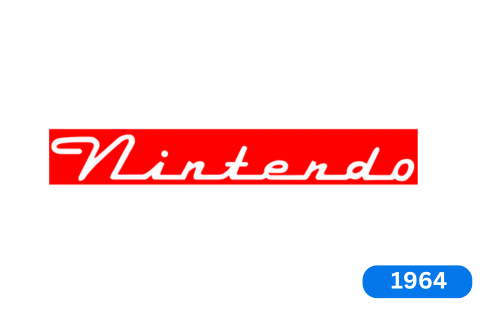
Back in 1964, the logo got a makeover. The new design featured a white inscription in fancy writing on a bright red background. The letters were all in capital letters, and they were connected at the bottom line.
1964
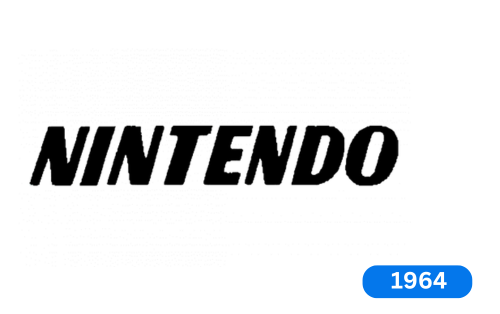
In 1964, a new logo was designed. It had big, bold letters written in a fancy rounded font. The letters were solid black and had a cool, slanted look. The corners of the letters were round, which made them look delicate and stylish.
1965
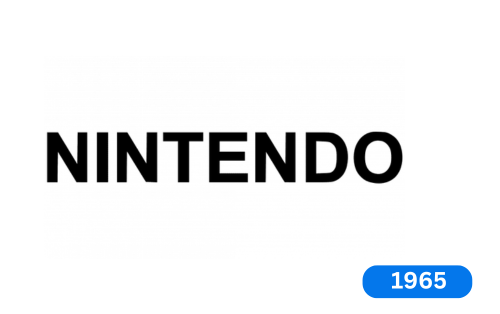
Nintendo underwent a logo update in 1965. They introduced a new, minimalist design that featured a straightforward word mark. The logo was in all capitals, using a traditional Sans-serif typeface with enough space between letters to create a clean and professional look.
1965
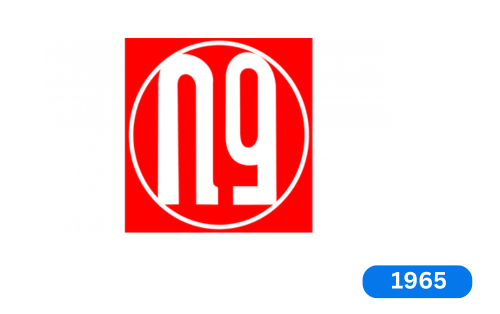
In 1966, the brand came up with a logo that had a fancy monogram in a thin circular frame. The logo had a color scheme of red and white, which became a signature style for the brand.
1967
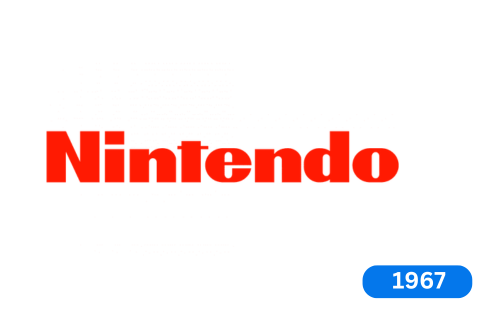
Back in 1967, Nintendo decided to update their logo. They replaced the full name with just the letter “N” and a symbol resembling the number 9. The new logo was enclosed in a thin circular border and was colored white and red. This color combination soon became central to the company’s identity.
1968
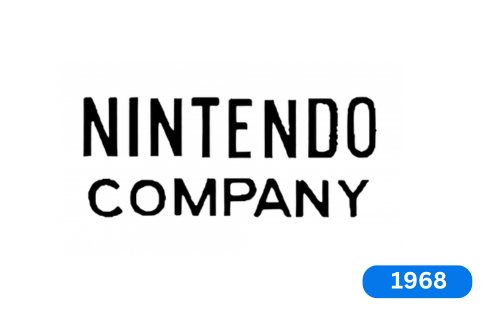
In 1968, Nintendo decided to change the look of its logo by introducing a new color scheme of red and white. They also added a cool hexagonal border around the word mark to make it stand out. The new logo had a brighter shade of red than the old one.
1970
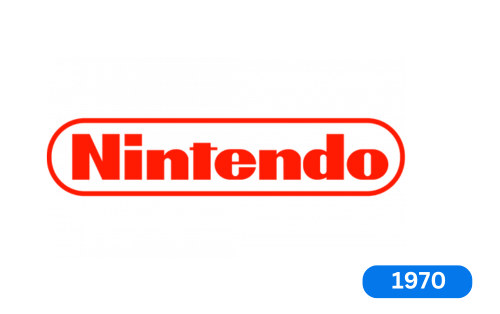
In 1970, the badge got a makeover. The old hexagonal frame was replaced with a new narrow and rounded one. This added some elegance and lightness to the badge, balancing out the big square letters. The colors stayed the same though.
1973
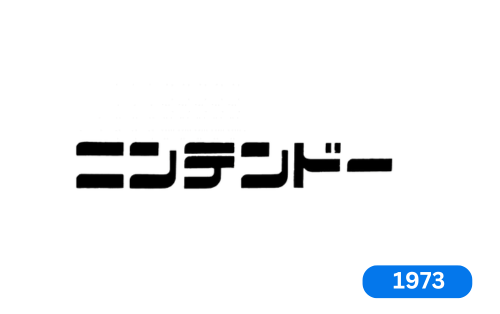
In 1973, Nintendo introduced a new logo designed in Japanese. This was only the second version of their logo, which looked completely different from the first one. The new logo was monochrome and featured several bold lines and rounded edges. However, it was only used for a short period.
1975 today
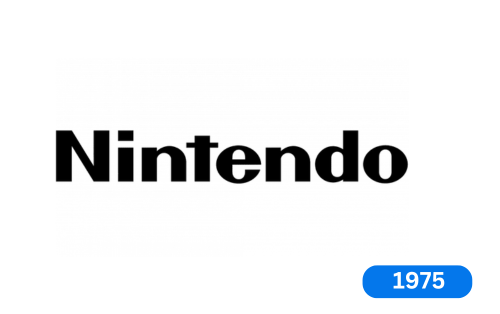
Did you know that in 1976, Nintendo changed their logo? They updated it to a modern Sans-serif font with clear, bold lines and clean letter shapes, all done in black. This new monochrome logo is still being used by the brand today.
1977
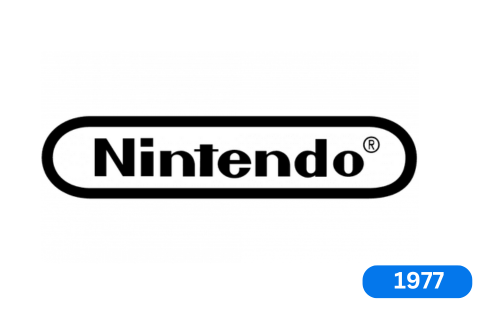
In 1977, Nintendo updated its logo. The new design features a horizontally stretched rectangular frame with rounded edges similar to the 1970s version. However, the characters were thinner, and the color palette was more limited. The logo still uses the Nintendo font from the previous version, with an oval border around the text.
1983
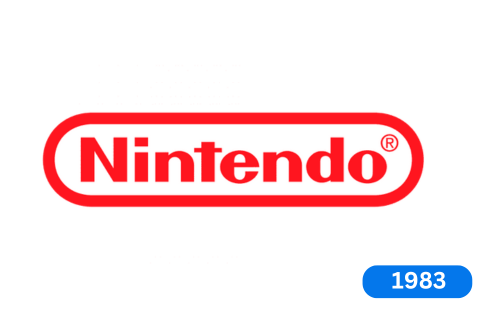
Back in 1983, the logo underwent a significant change. The original black-and-white design was replaced with a striking red-and-white color scheme, making it more memorable. The new design was perfectly balanced, which gave it a sense of stability and confidence. The smooth frame surrounding the logo also created a light and tender feeling. Overall, the changes made to the logo were highly successful and have helped make it an iconic symbol recognized worldwide.
2006
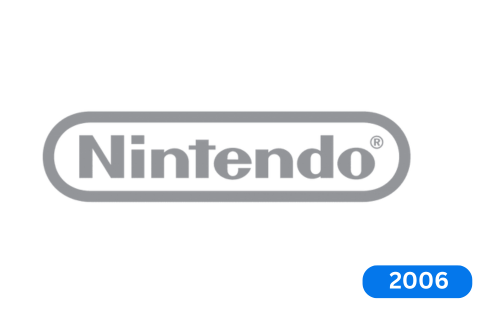
In 2006, Nintendo updated their color palette to a light-gray-on-white combination. This new look gave off a professional and stable vibe while also showing the company’s commitment to its customers. The colors were chosen to make Nintendo appear reliable and loyal, which is important for building trust with their audience.
2016 today
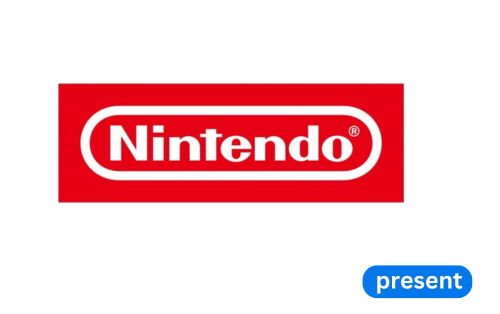
The Nintendo logo was redesigned in 2016, the seventeenth iteration of the company’s logo. The new design returned the classic red and white color palette with a twist. White letters in a white frame were placed on a red horizontal rectangle, giving the logo a stylish, confident, and progressive look. This design is now the most recognizable version of the logo. They were making it the most recognizable version of the logo. It’s a timeless and beautiful reminder that creativity can mean reimagining and building on the past.
color codes of Nintendo’s iconic logo
![]()
Conclusion
As we conclude our analysis of the design behind Nintendo’s iconic logo, we can see that it’s an excellent example of thoughtful and strategic design. The logo’s simplicity, use of color, and ability to evolve while maintaining brand integrity offer valuable lessons to graphic designers at all levels. When you’re designing a logo, it’s important to remember that it’s not just a picture, but the face of your brand that helps establish your identity. Nintendo’s logo is a perfect example of what makes a good logo. You can take inspiration from successful companies like Nintendo to ensure that your logo is memorable and helps create a strong identity for your brand. Today, the Nintendo logo symbolizes fun, passion, and excitement for countless gamers worldwide. Despite its simplicity, it is one of the most memorable logos in the gaming industry.


